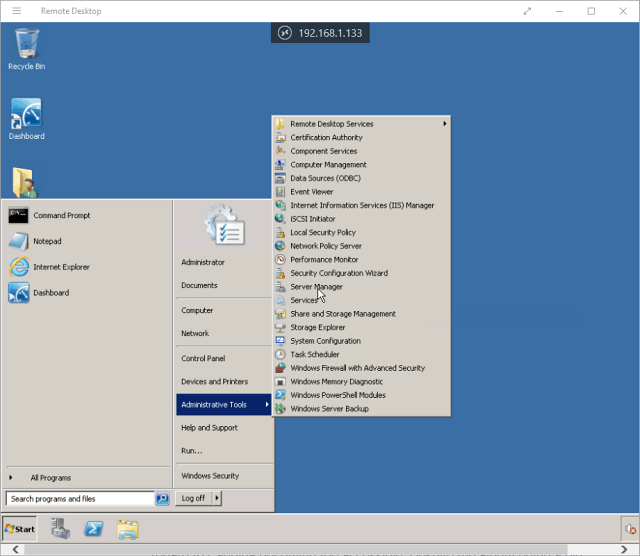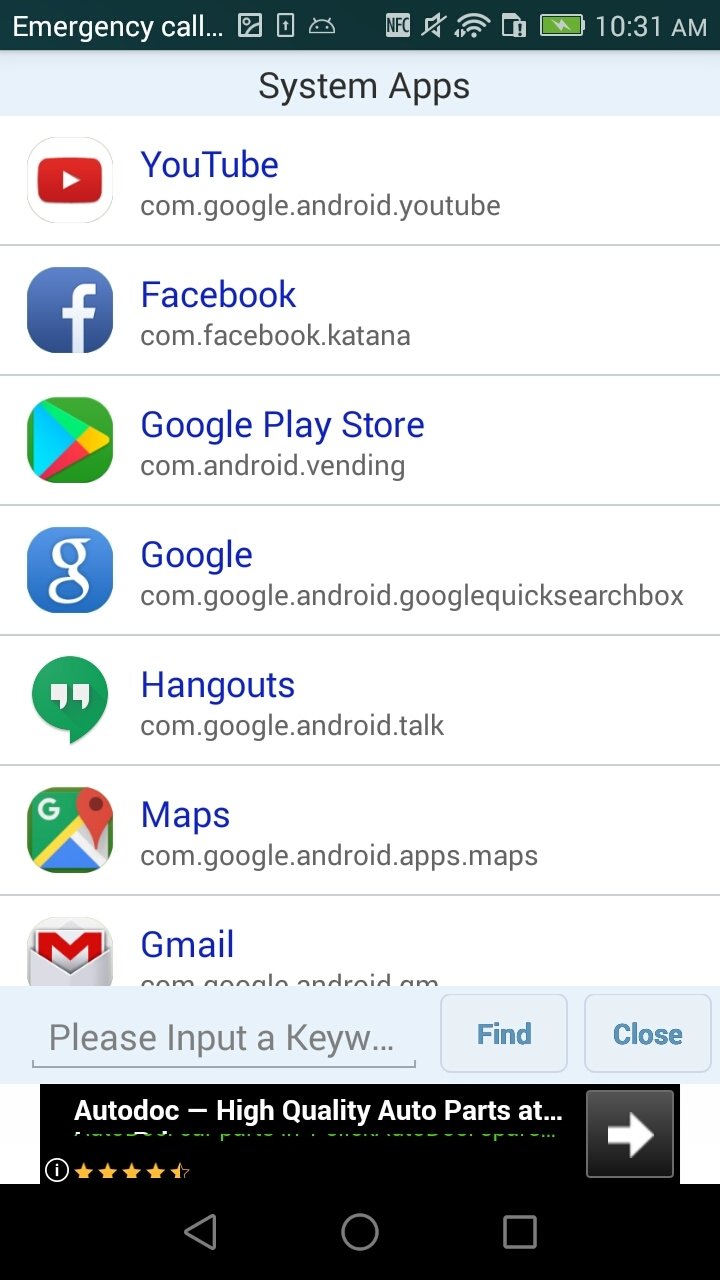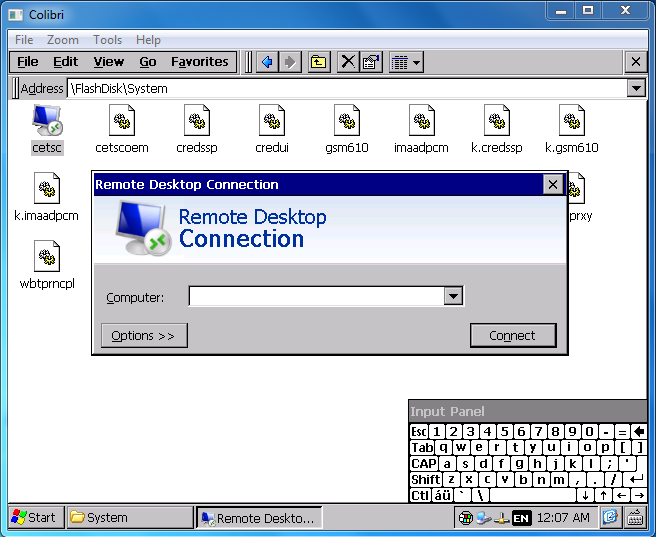Applies to: Configuration Manager (current branch)
Quick Assist is a new app in Windows 10 that enables you to receive or provide assistance over a remote connection. We encourage you to try Quick Assist for a more streamlined, easy-to-use experience. Open Quick Assist. Select Start Quick Assist. Give assistance. RemotePC is the best remote desktop software right now RemotePC is another stellar product from the team at iDrive (we also recommend its excellent cloud storage solution). RemotePC uses top-notch. .Remote Server Administration Tools for Windows 10 can be installed ONLY on computers that are running the full release of Windows 10 Professional, Windows 10 Enterprise, or Windows 10 Education. Remote Server Administration Tools cannot be installed on Windows RT, computers with an Advanced RISC Machine (ARM) architecture, or other system.
Configuration Manager allows you to connect to client computers using Configuration Manager Remote Control. Before you begin to use remote control, ensure that you review the information in the following articles:
Here are three ways to start the remote control viewer:
In the Configuration Manager console.
In a Windows command prompt.
From the Windows Start menu, on a computer that runs the Configuration Manager console, in the Microsoft Endpoint Manager program group.
Note
The above Start menu path is for versions from November 2019 (version 1910) or later. In earlier versions, the folder name is Microsoft System Center.
To remotely administer a client computer from the Configuration Manager console
In the Configuration Manager console, choose Assets and Compliance > Devices or Device Collections.
Select the computer that you want to remotely administer and then, in the Home tab, in the Device group, choose Start > Remote Control.
Important
If the client setting Prompt user for Remote Control permission is set to True, the connection does not initiate until the user at the remote computer agrees to the remote control prompt. For more information, see Configuring remote control.
After the Configuration Manager Remote Control window opens, you can remotely administer the client computer. Use the following options to configure the connection.
Note
If the computer that you connect to has multiple monitors, the display from all the monitors is shown in the remote control window.
File
- Connect - Connect to another computer. This option is unavailable when a remote control session is active.
- Disconnect - Disconnects the active remote control session but doesn't close the Configuration Manager Remote Control window.
- Exit - Disconnects the active remote control session and closes the Configuration Manager Remote Control window.
Note
When you disconnect a remote control session, the contents of the Windows Clipboard on the computer that you are viewing is deleted.
View
- Color depth - Choose either 16 bits or 32 bits per pixel.
- Full Screen - Maximizes the Configuration Manager Remote Control window. To exit full screen mode, press Ctrl+Alt+Break.
- Optimize for low bandwidth connection - Choose this option if the connection is low bandwidth.
- Display:
- All Screens - If the computer that you connect to has multiple monitors, the display from all the monitors is shown in the remote control window.
- First Screen - The first screen is at the top and far left as shown in Windows display settings. You can't select a specific screen. When you switch the configuration of the viewer, reconnect the remote session. The viewer saves your preference for future connections.
- Scale to Fit - Scales the display of the remote computer to fit the size of the Configuration Manager Remote Control window.
- Status Bar - Toggles the display of the Configuration Manager Remote Control window status bar.
Note
The viewer saves your preference for future connections.
Action
- Send Ctrl+Alt+Del Key - Sends a Ctrl+Alt+Del key combination to the remote computer.
- Enable Clipboard Sharing - Lets you copy and paste items to and from the remote computer. If you change this value, you must restart the remote control session for the change to take effect.
- If you don't want clipboard sharing to be enabled in the Configuration Manager console, on the computer running the console, set the value of the registry key HKEY_CURRENT_USERSoftwareMicrosoftConfigMgr10Remote ControlClipboard Sharing to 0.
- Enable Keyboard Translation - Translates the keyboard layout of the computer running the console to the connected device's layout.
- Lock Remote Keyboard and Mouse - Locks the remote keyboard and mouse to prevent the user from operating the remote computer.
Help
- About Remote Control - Displays the current version of the viewer.
Users at the remote computer can view more information about the remote control session when they click the Configuration Manager Remote Control icon. The icon is in the Windows notification area or the icon on the remote control session bar.
To start the remote control viewer from the Windows command line
- At the Windows command prompt, type <Configuration Manager Installation Folder>AdminConsoleBini386CmRcViewer.exe
CmRcViewer.exe supports the following command-line options:
Address- Specifies the NetBIOS name, the fully qualified domain name (FQDN), or the IP address of the client computer that you want to connect to.Site Server Name- Specifies the name of the Configuration Manager site server to which you want to send status messages that are related to the remote control session./?- Displays the command-line options for the remote control viewer.
Example:CmRcViewer.exe <Address> <Site Server Name>
Note
The remote control viewer is supported on all operating systems that are supported for the Configuration Manager console. For more information, see Supported configurations for Configuration Manager consoles and Prerequisites for remote control.
Next steps
-->Remote debug live content on a Windows 10 device from your Windows or macOS computer. This tutorial teaches you the following tasks.
- Set up your Windows 10 device for remote debugging and connect to it from your development machine.
- Inspect and debug live content on your Windows 10 device from your development machine.
- Screencast content from your Windows 10 device onto a DevTools instance on your development machine.
Step 1: Set up the host (debuggee machine)
The host or debuggee machine is the Windows 10 device that you want to debug. It may be a remote device that is hard for you to physically access or it may not have keyboard and mouse peripherals, making it difficult to interact with the Microsoft Edge DevTools on that device. To set up the host (debuggee) machine, you need to complete the following actions.
- Install and configure Microsoft Edge (Chromium)
- Install the Remote Tools for Microsoft Edge (Beta) from the Microsoft Store
- Activate Developer Mode and enable Device Portal
Windows 10 Remote Tool
Install and configure Microsoft Edge (Chromium)
If you have not already, install Microsoft Edge (Chromium) from this page. If you are using a pre-installed version of Microsoft Edge on the host (debuggee) machine, verify that you have Microsoft Edge (Chromium) and not Microsoft Edge (EdgeHTML). A quick way to check is to load edge://settings/help in the browser and confirm that the version number is 75 or higher.

Now navigate to edge://flags in Microsoft Edge (Chromium). In Search flags, type in Enable remote debugging through Windows Device Portal. Set that flag to Enabled. Then, choose the Restart button to restart Microsoft Edge (Chromium).
Install the Remote Tools for Microsoft Edge (Beta)
Install the Remote Tools for Microsoft Edge (Beta) from the Microsoft Store.
Note
The Get button for the Remote Tools for Microsoft Edge (Beta) may be disabled if you are on Windows 10 version 1809 or earlier. To set up the host (debuggee) machine, it must be running Windows 10 version 1903 or later. Update the host (debuggee) machine to acquire the Remote Tools for Microsoft Edge (Beta).
The Remote Tools for Microsoft Edge (Beta) in the Microsoft Store
Launch the Remote Tools for Microsoft Edge (Beta) and, if prompted, accept the permissions dialog in the app. You are now able to close the Remote Tools for Microsoft Edge (Beta) and you do not need to have it open for future remote debugging sessions.
Activate Developer Mode and enable Device Portal
If you are on a WiFi network, ensure the network is marked as either Domain or Private. You may verify the state by opening the Windows Security app, choosing on Firewall & network protection and checking if your network is listed as a Domain network or Private network.
If it is listed as Public, navigate to Settings > Network & Internet > Wi-Fi, choose on your network and toggle the Network profile button to Private.
Now, open the Settings app. In Find a setting, enter Developer settings and choose it. Toggle on Developer Mode. You may now turn on the Device Portal by setting Turn on remote diagnostics over local area network connections to On. You may then optionally turn Authentication on so that the client (debugger) device must provide the correct credentials to connect to this device.
Note
If Turn on remote diagnostics over local area network connections. was previously turned on, you must turn it off and turn it on again for Device Portal to work with the Remote Tools for Microsoft Edge (Beta). If a For developers section is not displayed in Settings, Device Portal may already be turned on so try restarting the Windows 10 device instead.
Note the machine IP address and connection port displayed under Connect using:. The IP address in the image below is 192.168.86.78 and the connection port is 50080.

You enter the information on the client (debugger) device in the next section. Open tabs in Microsoft Edge and Progressive Web Apps (PWAs) on the host (debuggee) machine that you want to debug from the client (debugger) machine.
Step 2: Set up the client (debugger machine)
The client or debugger machine is the device you want to debug from. This device may be your daily development machine or it may just be your PC or MacBook when working from home.
To set up the client (debugger) machine, install Microsoft Edge (Chromium) from this page if you have not already. If you are using a pre-installed version of Microsoft Edge on the host (debuggee) machine, verify that you have Microsoft Edge (Chromium) and not Microsoft Edge (EdgeHTML). A quick way to check is to load edge://settings/help in the browser and confirm that the version number is 75 or higher.
Now navigate to edge://flags in Microsoft Edge (Chromium). In Search flags, type in Enable remote Windows device debugging in edge://inspect. Set that flag to Enabled. Then, choose the Restart button to restart Microsoft Edge (Chromium).
Now navigate to the edge://inspect page in Microsoft Edge (Chromium). By default, you should be on the Devices section. Under Connect to a remote Windows device, enter the IP address and the connection port of the host (debuggee) machine in the textbox following this pattern: http://IP address:connection port. Now choose Connect to Device.
If you set up authentication for the host (debuggee) machine, you are prompted to enter the Username and Password for the client (debugger) machine to connect successfully.
Using https instead of http
If you want to connect to the host (debuggee) machine using https instead of http, you must navigate to http://IP address:50080/config/rootcertificate in Microsoft Edge on the client (debugger) machine. This automatically downloads a security certificate named rootcertificate.cer.
Choose rootcertificate.cer. This opens the Windows Certificate Manager tool.
Choose Install certificate..., ensure that Current User is turned on, and choose Next. Now choose Place all certificates in the following store and choose Browse.... Choose the Trusted Root Certification Authorities store and choose OK. Choose Next and then choose Finish. If prompted, confirm that you want to install this certificate to the Trusted Root Certification Authorities store.
Now, when connecting to the host (debuggee) machine from the client (debugger) machine using the edge://inspect page, you must use a different connection port value. By default, for desktop Windows, the Device Portal uses 50080 as the connection port for http. For https, the Device Portal uses 50043 so follow this pattern: https://IP address:50043 on the edge://inspect page. Read more about the default ports used by Device Portal.
Note
The default port for http is 50080 and the default port for https is 50043 but this is not always the case as Device Portal on desktop claims ports in the ephemeral range (>50,000) to prevent collisions with existing port claims on the device. To learn more, navigate to the Port Settings section for Device Portal on Windows desktop.

Step 3: Debug content on the host from the client
If the client (debugger) machine successfully connects to the host (debuggee) machine, the edge://inspect page on the client now displays a list of the tabs in Microsoft Edge and any open PWAs on the host.
Determine the content you want to debug and choose inspect. The Microsoft Edge DevTools opens in a new tab and screencast the content from the host (debuggee) machine to the client (debugger) machine. You are now able to use the full power of the Microsoft Edge DevTools on the client for content running on the host. Learn more about how to use the Microsoft Edge DevTools here.
The Microsoft Edge DevTools on the client debugging a tab in Microsoft Edge on the host
Inspect elements
For example, try inspecting an element. Navigate to the Elements tool of your DevTools instance on the client, and hover on an element to highlight it in the viewport of the host device.
You may also tap an element on your host device screen to choose it in the Elements tool. Choose Select Element on your DevTools instance on the client, and then tap the element on your host device screen.
Note
Select Element is disabled after the first touch, so you need to turn it on again every time you want to use this feature.
Important
Windows 10 Remote Tool Download
The Event Listeners pane in the Elements tool is blank on Windows 10 version 1903. This is a known issue and the team plans to fix the Event Listeners pane in a servicing update to Windows 10 version 1903.
Step 4: Screencast your host screen to your client device
By default, the DevTools instance on the client have screencasting turned on, which allows you to view the content on the host device in your DevTools instance on your client device. Choose Toggle Screencast to turn off or on this feature.
You are able to interact with the screencast in multiple ways:
- Chooses are translated into taps, firing proper touch events on the device.
- Keystrokes on your computer are sent to the device.
- To simulate a pinch gesture, hold
Shiftwhile dragging. - To scroll, use your trackpad or mouse wheel, or fling with your mouse pointer.
Some notes on screencasts:
- Screencasts only display page content. Transparent portions of the screencast represent device interfaces, such as the Microsoft Edge address bar, the Windows 10 taskbar, or the Windows 10 keyboard.
- Screencasts negatively affect frame rates. Disable screencasting while measuring scrolls or animations to get a more accurate picture of the performance of your page.
- If your host device screen locks, the content of your screencast disappears. Unlock your host device screen to automatically resume the screencast.
Known Issues
The Event Listeners pane in the Elements tool is blank on Windows 10 version 1903. The team plans to fix the Event Listeners pane in a servicing update to Windows 10 version 1903.

The Cookies pane in the Application panel is blank on Windows 10 version 1903. The team plans to fix the Cookies pane in a servicing update to Windows 10 version 1903.
The Audits panel, the 3D View panel, the Emulated Devices section in Settings, and the Accessibility tree pane in the Elements tool are not currently working as expected. The team plans to fix these tools in a future update of Microsoft Edge.
The file explorer does not launch from the DevTools in the Sources panel or in the Security panel when remote debugging. The team plans to fix these tools in a future update of Microsoft Edge.
